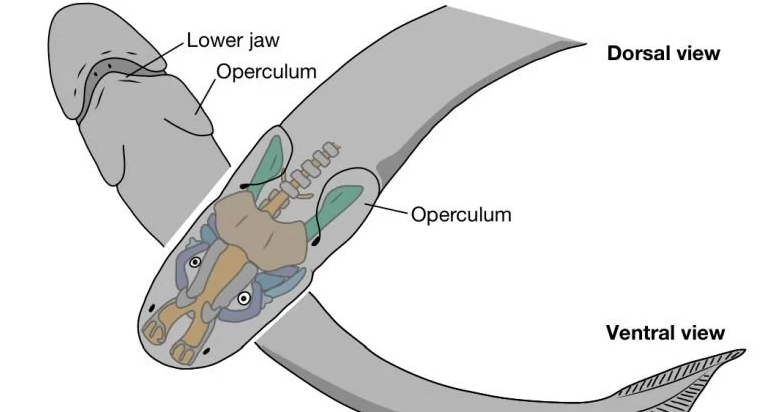Aussie scientist helps identify a ‘missing evolutionary link’ and resolve a century-old mystery

Moving from water to a terrestrial habitat was a monumental event in the history of life on Earth.
So, any piece of evidence that helps elucidate how and when that occurred is critical to understanding the evolution of land animals, including humans.
Now a team of researchers from Japan and Australia has identified one of the earliest animals likely to have been involved in that important transition.
And that means that it’s a long-lost ancestor of humans…albeit from our very, very distant past!

Ancient vertebrate
The resemblance is certainly beyond skin-deep because the creature is eel-shaped and little more than 6cm in length.
It has the scientific name of Palaeospondylus gunni and is known from a range of fractured fossils first found in a quarry in Scotland in the late 1800s.
Ever since its discovery it’s had fossil experts scratching their heads about what it might be.
It’s always been known to be a vertebrate of some sort, but opinions ranged on exactly what kind.
The most recent breakthrough about its identity has involved a collaboration between experts from the Australian National University (ANU), University of Tokyo and the Evolutionary Morphology Laboratory RIKEN, in Tokyo,
ANU evolutionary biologist Dr Daisy Hu explains that there is now good reason to believe Palaeospondylus gunni was perhaps a lobe-finned fish and possibly even a “stem tetrapod” – a potential ancestor of the first four-legged walking creatures.
Lobe-finned fish are an ancient line of vertebrates, most of which died out millions of years ago. But their morphology includes many primitive features still seen in the modern vertebrates that ended up living on land, including ourselves.

A Queensland relative
Only eight lobe-finned fish species still survive. They’re like living fossils, and one of the best known is the Queensland lung fish, which is believed to have existed as a species for about 400 million years.
Daisy agrees that Palaeospondylus gunni would have been “comparable” to the modern-day Queensland lungfish, which, unlike most fish, can breathe via lungs to survive on land in evaporating pools of water during periods of drought.
What’s made the understanding of Palaeospondylus gunni’s place in our evolutionary tree possible has been the application of relatively new technology to fossils of the creature. But before that could happen Daisy and her colleagues needed to sift sifting through all the fossil material related to the unknown creature to identify specimens suitable for use for this new analysis.
“Morphological comparisons of this animal have always been extremely challenging for scientists,” Daisy said.
But recent improvements in “high-resolution 3D segmentation and visualisation” have made it possible.
That first meant finding fossils that were suitable and intact enough to be able to be subjected to the new techniques. Daisy and her colleague spent almost five years sifting through thousands of pieces of rock to find suitable fossil specimens.
Finding the few perfect specimens for analysis was Daisy said, “like winning the lottery, or even better!”
“It’s been a milestone to identify what exactly this animal was,” Daisy said.
So where to now for this research?
One direction research may now take is to compare it more closely with living species that might be close relatives, and that includes the Queensland lungfish.




